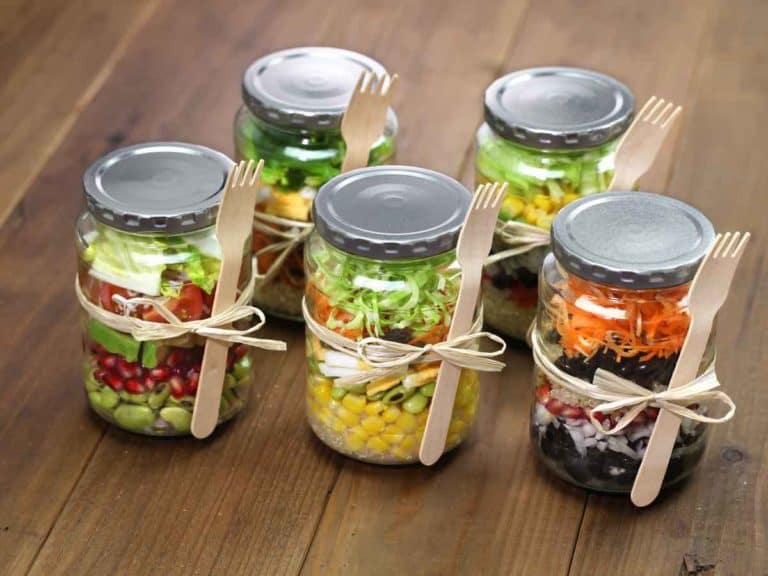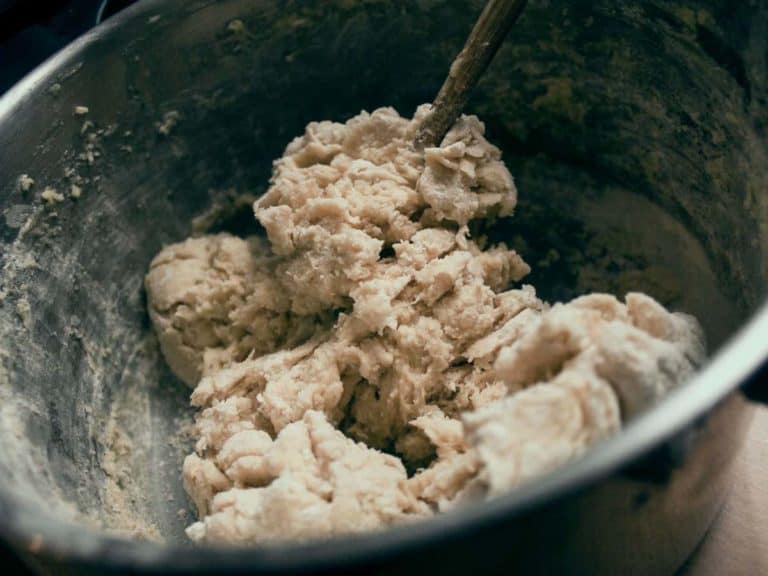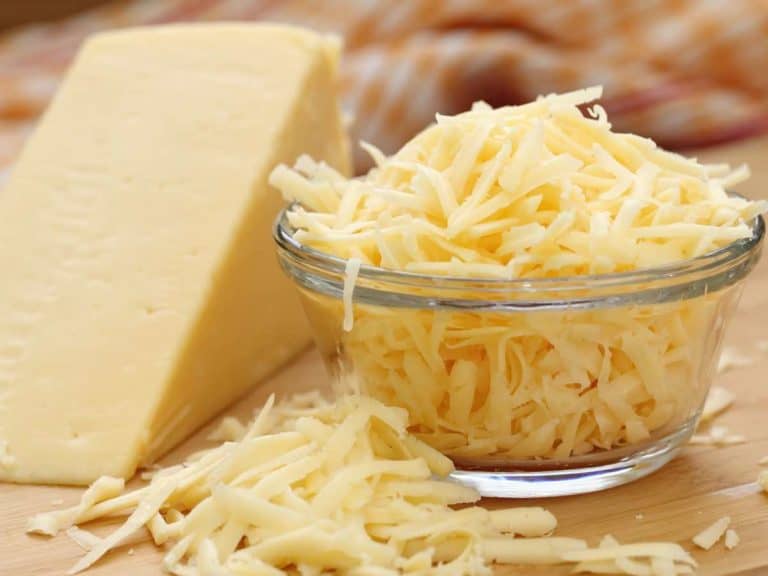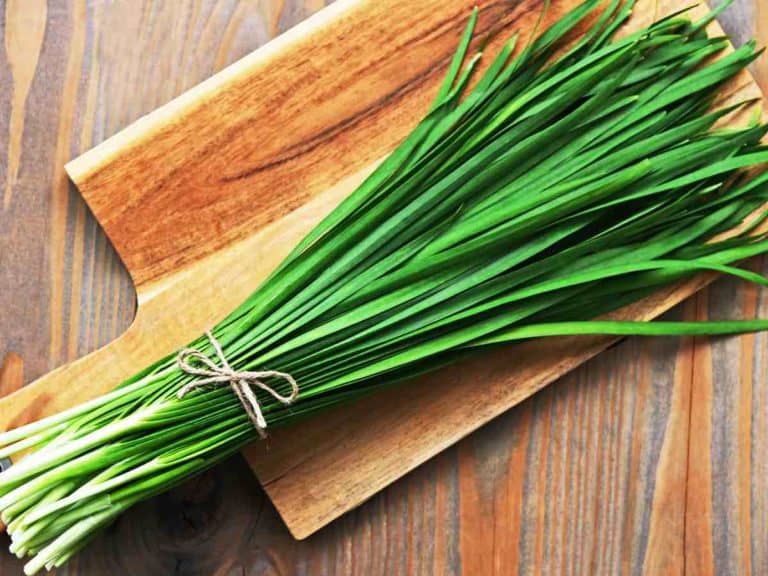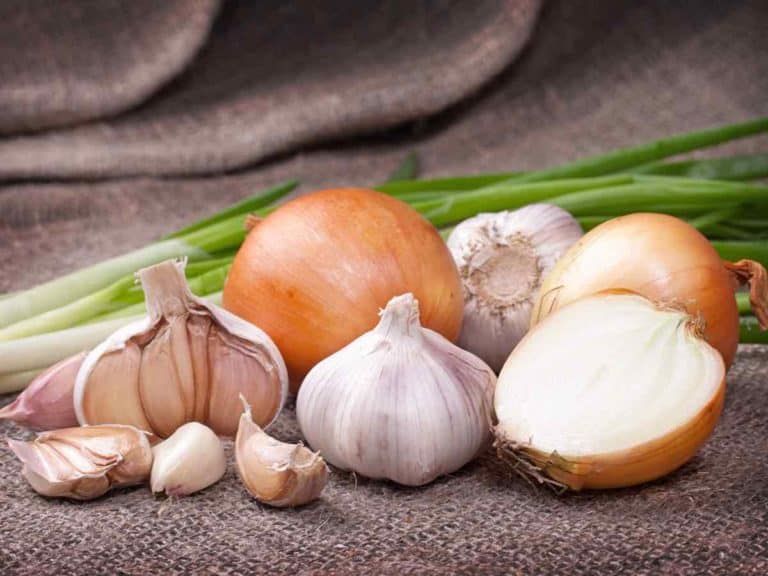How to Eat Dehydrated Food: Diet, Rehydration, etc
Dehydration can keep food fresh for up to five years — longer if it’s dehydrated properly. When dehydrating food, a food dehydrator is necessary. And when rehydrating dried food for consumption, in some instances, all you need is a little water. Different dehydrated food can be eaten in different ways.
Many dehydrated foods need to be soaked in water before consumption. Some dehydrated fruits can be eaten dried, while others have to be rehydrated first. Dried veggies can be rehydrated by adding them to dishes while they are being cooked. Most dehydrated meat should be rehydrated beforehand.
But before we discuss how to eat dehydrated food further, let’s talk about this very important matter first…
How to tell if dehydrated food is bad?
Dehydrated food goes bad if improperly stored and collects moisture. This causes bacterial and fungal action. The presence of oozing liquid and mold is a telltale sign that dehydrated food is bad. A change in color and smell is an indicator, too. Crisp dehydrated food is bad if it turns chewy.
If you suspect that any dehydrated food is bad, there is only one thing to do: throw it away!
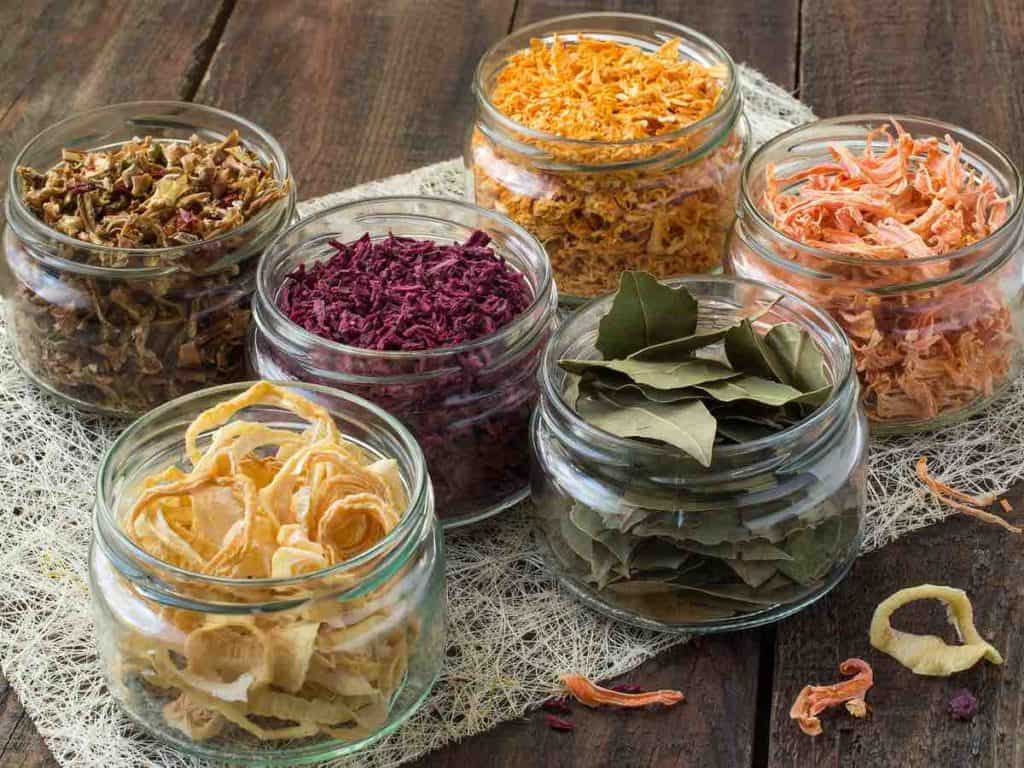
How to Eat Dehydrated Fruits
Dehydrated fruits can be eaten as they are. They may be munched on or mixed with other dried or non-dried foods, such as grains. Dehydrated fruits may be rehydrated, too, before consuming them for easier mastication and digestion. They may also be dehydrated beforehand for cooking purposes.
With a food dehydrator, fruits can be dehydrated for as quick as four hours to as long as 30 hours — sometimes longer. The good news is that rehydrating dried fruits can be as fast as 20 minutes only.
When rehydrating dried fruits, the basic rule applies: soak them in cold water double their amount.
For instance, if you wish to rehydrate a cup of dried apples, all you have to do is soak them in two cups of cold water. Wait for about 20 minutes or until every slice has grown to approximately four times its dehydrated size.
Dried fruits are tough, dense and chewy. It’s for the obvious fact that their moisture content has been removed. Not everyone finds it easy to consume dehydrated fruits, especially kids and older adults.
Fortunately, dried fruits can be easier to chew once they are rehydrated the right way.
It also makes them easier to digest, which is great news for anyone who easily ends up with an upset stomach because of poor digestion. Worry not because the nutritional content of dried fruits remains the same when they are rehydrated.
Do you wish to use dehydrated fruits for baking?
It’s a must that you soak them first in water. Otherwise, they will absorb water in the batter. This can leave you with a baked product that’s hard and dry.
Related Post: Best Food Dehydrators
Will rehydrating dried fruits reduce the sugar content?
The sugar content of dried fruits remains the same when they are rehydrated. However, they may no longer taste as sweet. Also, the flavor may no longer be as concentrated because of the reintroduction of moisture. Aside from the sugar content, the nutritional profile stays the same as well.
Some people, especially health-conscious ones, tend to steer clear of dehydrating fruits at home or buying dried fruits at the supermarket. That’s because they believe that they have more sugar.
Well, here’s the truth: it’s just a myth. Many assume that dried fruits have more sugar because they taste so much sweeter than their fresh counterparts.
The reason why they are sweeter is not because they have more sugar. Rather, it’s because their sugar content is concentrated due to the absence of moisture.
So, a slice of dried orange has the exact amount of sugar as a slice of fresh orange. However, the slice of dehydrated orange tastes sweeter because of increased sugar concentration.
However, a cup of dried orange slices has more sugar than a cup of fresh orange slices.
It’s because more dehydrated orange slices can fit in a cup since they are a few times smaller than their non-dehydrated counterparts. Especially if you are on a weight-loss diet, portion control is critical!
Will dehydrated fruits cause me to gain unnecessary weight?
Although they are sweeter, dried fruits still contain the same amount of sugar as fresh fruits. However, it can be easier to eat more dehydrated fruits than fresh fruits as they are free of moisture. Due to this, one may end up consuming more calories than needed, which can lead to weight gain.
Slices of dried fruits or other foods are way smaller than fresh ones. Especially if you eat mindlessly, you can end up eating a lot of dehydrated fruits, which can cause the calories to pile up.
Needless to say, dried fruits are not the ones that can wreak havoc on the waistline.
Rather, it’s the consumption of lots and lots of dehydrated fruits that can be blamed. Do a couple of things to fend off unwanted weight gain when eating dried fruits or something else.
They are: chew well and drink plenty of water.
Can I store rehydrated fruits in the refrigerator?
Rehydrated fruits can be stored in the refrigerator. Placed in an airtight container, they can stay fresh for up to five days. In the freezer, rehydrated fruits can keep for up to a year. However, due to the water content, they may no longer have the best texture when thawed in order to be eaten.
Most dried fruits can be stored for a year, provided that they are placed in an airtight container and kept at room temperature. Rehydrated fruits, unfortunately, do not exhibit the same phenomenal shelf life.
It’s the lack of moisture that allows dried fruits to stay in excellent condition for a long time.
This is why the introduction of moisture into them during the rehydration process can help keep them from staying fresh as long as they would when dried.
Moisture encourages bacterial action, and bacterial action causes spoilage.
Because of the increased moisture content, it is a bad idea to store rehydrated fruits at room temperature. Throw any rehydrated fruit away if it’s been sitting on a countertop or elsewhere in the kitchen for two hours.
Other than bacteria, fungi may also contaminate rehydrated dried fruits, especially if they are placed where it’s hot. This can result in the formation of mold.
Mold thrives on just about anything that has moisture, such as rehydrated fruits. Mold also tends to flourish where there is plenty of sugar. Dried fruits have large concentrations of sugar!
Related Post: Best Vacuum Sealers For Dehydrated Food
What will happen if I eat moldy rehydrated fruits?
Chances are that nothing will happen if you accidentally eat moldy rehydrated fruits. That’s because the mold will be killed by the acid in the stomach. However, different people may react differently. If nausea and abdominal pain are present for hours or days, it’s a good idea to head to the ER.
According to health experts, mold in rehydrated fruits as well as other types of foods can produce toxins called mycotoxins.
But because the number of mycotoxins produced by mold is limited, it is less likely that you will end up dead if you happen to eat rehydrated fruits or other foods with mycotoxins.
But if you don’t want to risk it, refrain from eating moldy rehydrated fruits. Sometimes you may see actual mold on them, while other times, they may simply smell of mold.
In some instances, they may look and smell moldy.
Removing moldy parts won’t cut it. Because rehydrated fruits contain a lot of moisture, there is a huge possibility that mold is just waiting for its presence on other parts to be known, too.
As a general rule of thumb, throw away rehydrated fruits if they have been sitting outside the refrigerator for a couple of hours or more.
How to Eat Dehydrated Vegetables and Grains
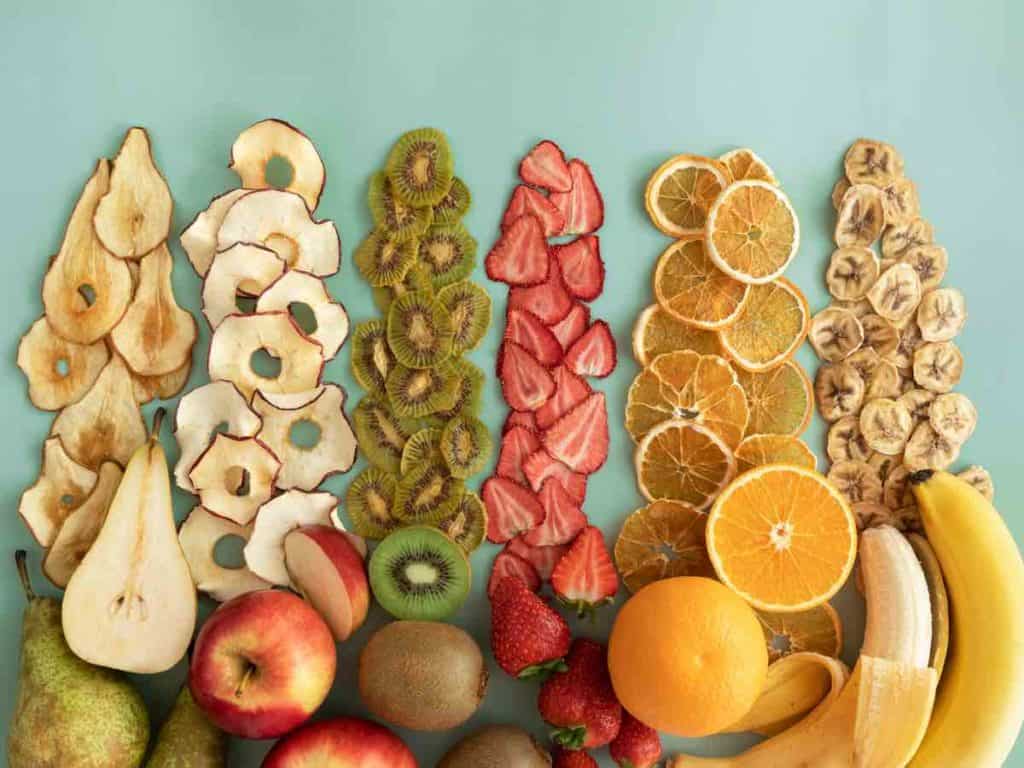
Dehydrated vegetables can be eaten as they are, usually served with butter, sauce or herbs. They can be rehydrated to serve as substitutes for fresh vegetables in just about any dish. Grains, on the other hand, are usually not rehydrated. They can be used as cooking ingredients or turned into flour.
Because of moisture loss, most dried vegetables do not look anything like their fresh counterparts. Soaking them in water twice their amount allows them to absorb moisture and end up rehydrated.
Some dehydrated vegetables may be consumed without rehydrating them beforehand.
Chewing them very well allows them to absorb some moisture in the mouth, thus making them easier to swallow and digest.
A lot of people who include dried vegetables in their diet regularly serve them with oils or sauces to make them moist.
Many dehydrated vegetables are too stringy and chewy to be eaten as they are. This is why it is a good idea to soak them in warm water first for one to two hours. They may also be simmered for 10 to 15 minutes.
If dried vegetables will be added to soups, stews, casseroles and others, they will require no rehydration.
However, they will need to be added to the mix before it boils to give them plenty of time to absorb enough moisture. Freshly dried vegetables tend to soften faster than dried vegetables that have been stored for a long time.
Grains, on the other hand, are commonly dehydrated to make it easier for them to be ground into powdered form. This makes them healthier alternatives to all-purpose flour.
Because they are gluten-free, powdered dehydrated grains are ideal for those with gluten sensitivity as well as celiac disease.
Is there a way to make dehydrated vegetables better when rehydrated?
Before dehydrating vegetables, they should be blanched first. This damages enzymes that can cause vegetables to lose their taste and color after some time. Blanching vegetables before dehydrating them can also make them easier to rehydrate, thus saving time when using them as cooking ingredients.
To blanch chopped vegetables before dehydrating them, they should be dropped in boiling water for four to six minutes. Afterward, they should be drained and placed in cold water until they are no longer hot.
Many vegetables require blanching prior to placing them in the food dehydrator. However, there are also those that no longer need blanching before the dehydration process.
If you are about to dehydrate vegetables, check if they are on this list of veggies that should be blanched beforehand:
- Asparagus
- Beans
- Beets
- Broccoli
- Brussels sprouts
- Cabbage
- Carrots
- Cauliflower
- Celery
- Chard
- Corn
- Eggplant
- Kale
- Okra
- Parsnips
- Peas
- Pumpkin
- Spinach
- Sweet peppers
- Potatoes
- Squash
- Zucchini
Do vegetables lose their nutrients when dehydrated?
Many of the nutrients of vegetables remain when they are dried. Unfortunately, some are lost during the dehydration process, such as vitamin A and vitamin C. Some B vitamins are lost during blanching. However, cooking fresh vegetables also causes other nutrients to be lost due to heat exposure.
What’s really nice about dehydrating vegetables is that the vegetables are not exposed to high temperatures, which helps keep some of their nutrients from getting damaged.
Sadly, dehydrating them exposes them to the environment for a long time. This can cause some nutrients that get easily damaged by air exposure to be lost.
Because vegetables are usually sliced thinly before being placed in the food dehydrator, many of the volatile nutrients in them can end up damaged.
Related Post: Best Slicers For Dehydrating
This does not mean, however, that dried foods are less nutritious than cooked fresh vegetables.
Cooking fresh vegetables exposes them to high temperatures, and this can damage some of their nutrients. Water-soluble nutrients such as B vitamins and vitamin C are some of the quickest to go when exposed to heat.
If you want to eat vegetables with all their nutrients intact, there is only one way to add them to your diet. And it’s none other than consuming them raw. Sadly, not all vegetables on the face of the planet can be eaten raw.
Does dehydrated food dehydrate you?
Dehydrated food will absorb saliva in your mouth and water in your stomach. However, it will not absorb water in your cells. It’s because of this why eating dehydrated food won’t cause dehydration. Still, it’s important to consume plenty of water (about eight glasses a day) to facilitate digestion.
While dehydrated foods won’t dehydrate you, there are certain foods that are proven to cause dehydration.
Some of them are sugar, alcohol and caffeine. That’s because they can cause the kidneys to make more pee.
Salty foods can also leave you dehydrated. Salt attracts water, and the consumption of salty foods can cause water in the cells to escape.
Too much salt, according to health experts, can also increase the blood pressure as well as one’s risk of suffering from heart disease, heart attack, and stroke.
How to Eat Dehydrated Meat
Dehydrated meat can be eaten fresh from storage, provided that they were exposed to 160°F or 165°F before they were placed in the food dehydrator. To rehydrate meat, soak them in boiling water for about four hours. After the first two hours, refrigerate them in order to fend off bacterial growth.
When properly done, it is perfectly safe to consume dehydrated meat as they are. Exposure to high temperatures before and during the process of dehydration kills any dangerous bacteria present.
Although some do not mind snacking on chewy and stringy dehydrated meat, others may not find it as delightful. This is when the importance of rehydrating dried meat beforehand comes in.
After correctly rehydrating them, dried meat becomes easier to eat. It also makes it easier for the stomach to digest them.
Rehydrating dehydrated meat needs to be done, too, if they will be used as cooking ingredients. However, in many instances, adding them to the mix before it boils is usually enough to make them tender.
What is the best way to rehydrate small amounts of dried meat?
Small amounts of dehydrated meat should be soaked in water for about half an hour. They may also be soaked in broth or wine to make them flavorful. Unlike when rehydrating dried fruits and vegetables, dehydrated meat should be soaked in the same amount instead of twice the amount of liquid.
Refrain from soaking dehydrated meat in more liquid than necessary. That’s because some of the nutrients will end up in the liquid, thus keeping you from consuming the healthiest dried meat.
Worry not because there is a workaround just in case it seems like you used more liquid than recommended. All you have to do is avoid throwing the liquid away.
You can think of it as nutrient-containing broth that you can consume. You can boil it or use it as an ingredient to practically any dish that requires the addition of broth or water.
How should dehydrated ground meat be rehydrated?
Dehydrated ground meat should be soaked in cold water. Soaking it in hot water to speed up the rehydration process will cause the dried ground meat to be rubbery, which can make it less pleasant to eat. Dehydrated ground meat should be soaked in cold water for up to an hour and a half.
By the way, when dehydrating ground meat, some experts recommend the use of pink curing salt. Also known as Prague powder, it can kill dangerous bacteria present in ground meat and other forms of meat.
Ground meat undergoes additional processing.
This makes it more susceptible to collecting or growing bacteria, many of which can put your health in grave danger. The use of pink curing salt can kill those harmful bacteria.
Worry not as the use of pink curing salt is safe. However, it should never be used as a replacement for table salt.
It is a good idea to cure ground meat or any other meat with pink curing salt before the dehydration process, especially if it’s not exposed to 160°F or 165°F before placing it in the food dehydrator.
Takeaway
Dehydrating food involves a learning curve. But once you have mastered the art of it, you will reap the many perks that it comes with.
Luckily, eating dried food is easier than dehydrating it. What’s more, it doesn’t consume a lot of time — it can be as quick as 20 minutes or an hour and a half.
Follow the tips and tricks on how to eat dehydrated food, and you can enjoy eating dried food like a pro!
Related Post: A Beginner’s Guide to Dehydrating Food
